Let’s face it: When most of us are looking for style inspiration these days, the first place we go to is the Internet. But when we’re looking through images online (or even back in the day, when we were browsing through magazines), what we’ll be seeing is really a representation of current fashions more than of timeless style. Is this a good thing?
Models & Modern Tailoring
Case in point, let’s take a look at modern tailoring. Most of the models you’re going to see in menswear publications these days are exceptionally skinny 20-somethings who really look more like teenagers. It’s safe to say that this is a body type and physique that 90% of Gentleman’s Gazette readers aren’t going to have. Even someone like me, who is on the taller side and definitely slim, isn’t quite athletic enough to fit this ideal modern body type.
Mod Fashions
So then, the modern style is all about the slim and narrow, but where did this come from? In our video on the history of the suit, we talked about the Mod fashions of the 1950s and ’60s and indeed, these looks are still influencing modern style today. The typical Mod suit was slim fitting with narrow lapels, and was often worn with similarly narrow ties. It featured slim, flat-fronted trousers that had narrow leg openings. As an example of this style, you can take a look at some of the suits worn by members of the Rat Pack in movies that they made in the late ’50s and early ’60s.
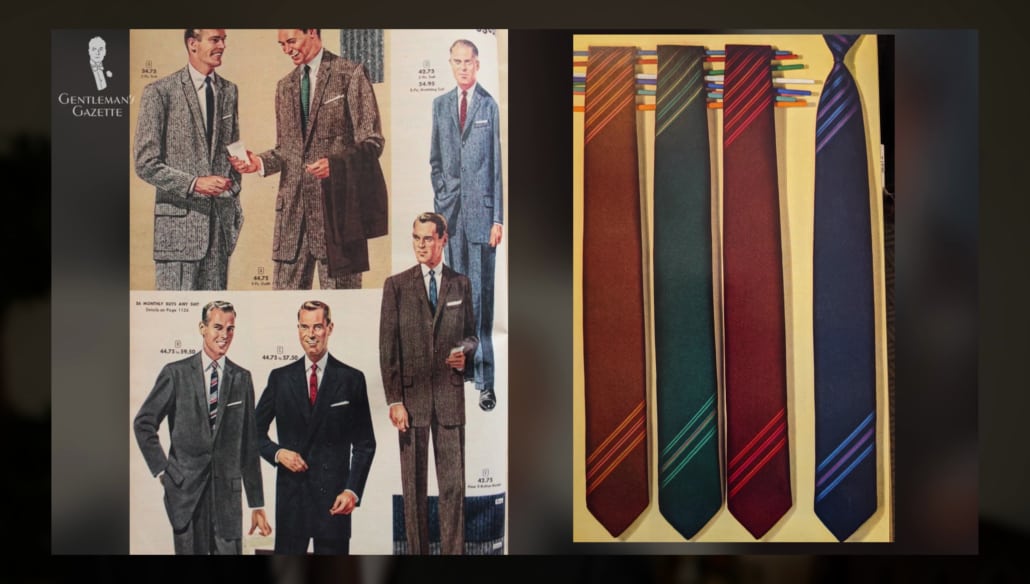
As the ’60s progressed, these mod suits got even slimmer and the pants also got shorter and more tapered, meaning that you wouldn’t see a break over the shoe. Overall, the history of men’s fashion can be characterized by actions and reactions. So, you’ll see things like lapels getting wider or narrower over time and cuts being baggier or slimmer. The Mod style, then, was a reaction against the more full cuts of earlier generations which were coming to be seen as old-fashioned. But by the 1980s and ’90s, everything was suddenly looser and more full cut again as a reaction to the slimmer styles that were now 20 years or so old.
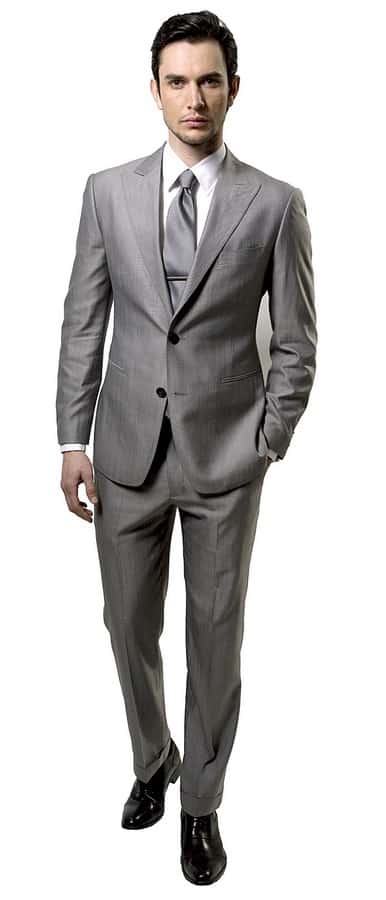
Then, in the 2000s, things flipped once again, and we’ve been in the slim-fit camp up to the present day. For examples of this, you can look at the current retail giant, Suit Supply, and for an extreme example, the work of American fashion designer, Thom Browne. So, it’s established that modern suits are very slim cut and therefore don’t work ideally for many men. But even if you’re not wearing a full suit (just a dress shirt and trousers), you might still experience some of these same fit problems.
Modern Shirts
Traditionally, men’s dress shirts were much more full-fitting, allowing for a greater range of motion if you wanted to do something like raise your arms. Because shirts were considered an undergarment in previous decades, and thus wouldn’t be seen unless underneath a jacket or other outer layer, this fuller fit wouldn’t be seen as sloppy.
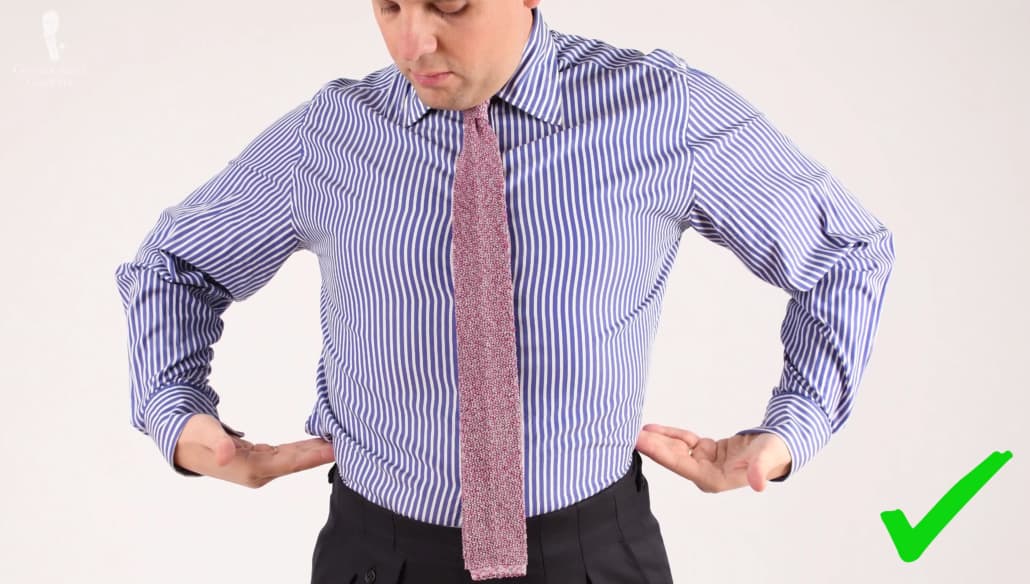
In the modern style, however, slim fit is definitely king, and you’ll even see some retailers marketing shirts with things like “extra slim fit” or “super slim fit.” This will likely cause problems if you have wider shoulders or any kind of a belly, however. Unless your whole torso is uniformly thin, you’re probably going to experience some pulling of the shirt fabric across your chest.
This will detract from a clean and uniform look when you’re standing up, and will be especially apparent if you’re wearing a shirt with a pattern like stripes. Rather than being straight up and down, the stripes are going to be crooked and broken. Because of this, many modern shirts will have spandex or elastane added into the weave to allow a bit more stretch of the fabric. However, this will likely mean that the longevity of the shirt is lower over time, and you might find fewer options from any one retailer. While you’ll experience some minor issues while standing, these will likely be further compounded when you’re sitting.

The placket, which is where the shirt’s buttons are, could even gap in addition to folding and creasing. This will make the front of the shirt look like an accordion, and even worse, it could expose your undershirt or bare skin through these gaps. Imagine being in a business meeting or on a first date and having your navel exposed through one of these shirt gaps. Definitely not a professional or good look! You could try to cover up some of this gapping and creasing with a necktie, of course, or you could just wear a shirt with a bit more room so that the gapping wouldn’t happen in the first place.
Modern Trousers
As we said before, the Mod style of the ’50s and ’60s was characterized by thin tapered and flat-fronted trousers with narrow leg openings. Many of today’s trouser offerings are similar, and again, they’re not going to be flattering to all body types. For example, if you’ve got larger thighs (either from working out, cycling, or just due to genetics), modern slim-fit pants might not work for you. For one thing, they’re going to look unsightly–wrinkling, bunching, and making your legs look a bit like sausage casings–and they might also be uncomfortable. What’s more, the seams could even tear if subjected to enough pressure.
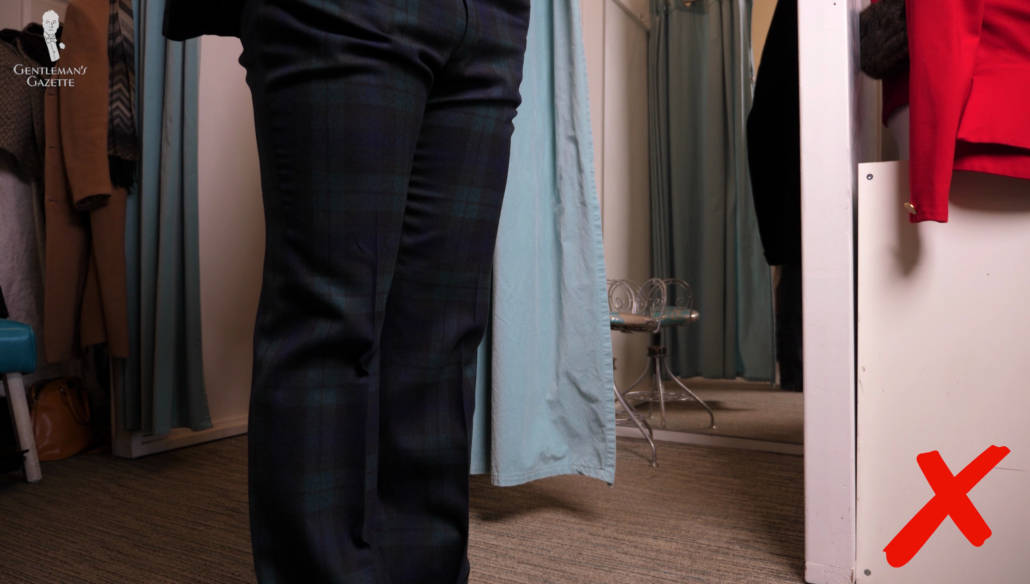
Similarly, if you’re carrying any excess weight in your midsection, flat-fronted pants might not be your best option. You could verticalize your look a little bit more and, therefore, slim yourself down visually by trying pleated pants. Pleats have a bad reputation today because of the baggy pleated styles of the 1980s and ’90s, but these are extreme outlier examples. Today’s pleated styles are more moderate overall and of course, remember that pleated pants are a staple of men’s fashion going as far back as the Golden Age of the 1930s and 40s and seen on Hollywood icons like Clark Gable and Cary Grant.
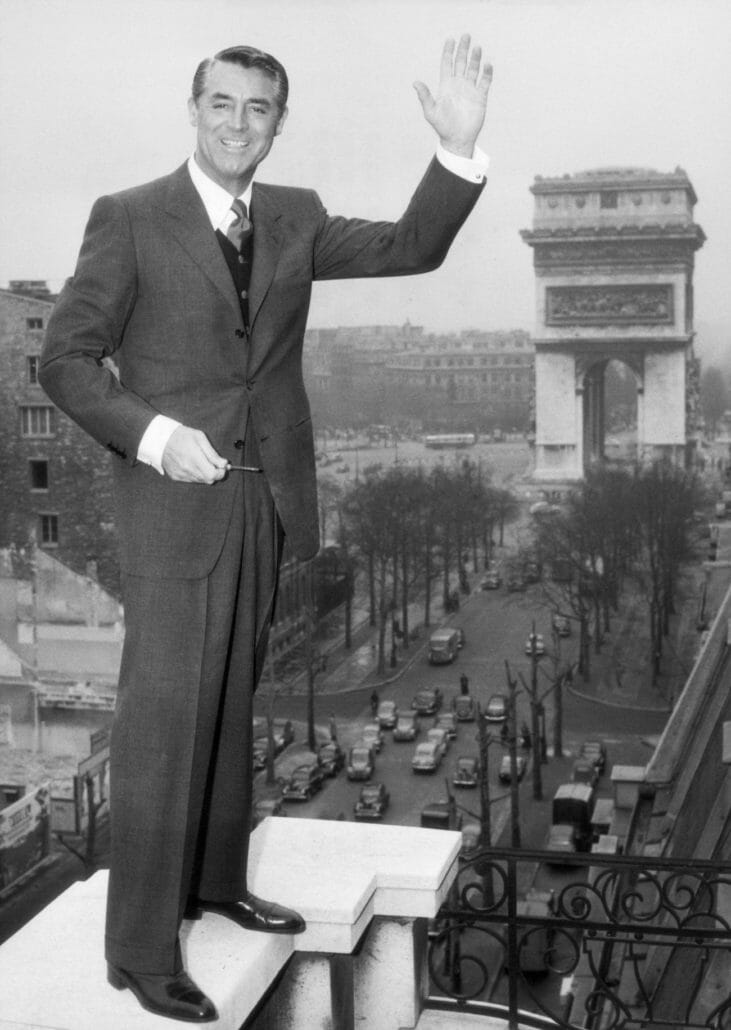
In addition to emphasizing your vertical line, pleats will also give you a bit more room in the trouser and thus, more comfort especially when sitting. However, while you can certainly find pleated pants today, they’re not going to be standard in most modern styles.
Your typical modern cut also tends to have a lower rise. This is the distance from the crotch of the trouser to the top of the waistband. Essentially, the rise measures how far up your waist the pants will sit. A low rise is associated again with that slim teenage build but it’s definitely not going to work for everyone. Especially again, if you’ve got weight in your midsection, this low rise will probably cause a bit of a muffin top and will make your tucked-in shirts look especially unsightly.
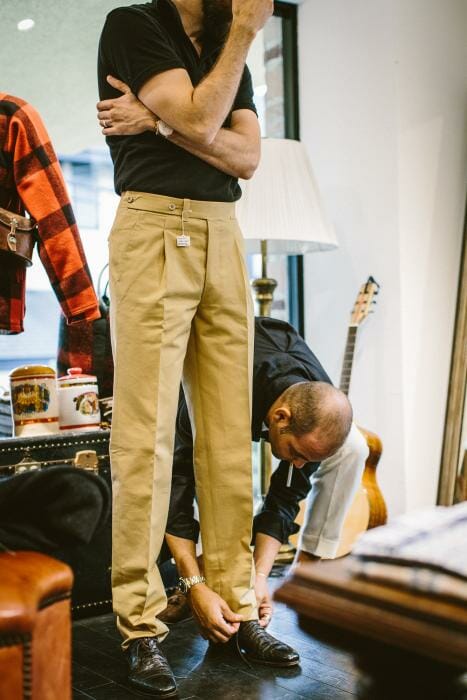
As is the case with pleats, a higher rise that sits closer to your natural waist, essentially in line with your navel, can make you more comfortable and give you a more flattering look. Classic style dictates that you not show any exposed shirt between the bottom of your necktie and your waistband when you’re standing and your jacket is buttoned. As a bonus here, wearing trousers with a higher rise will ensure that this dreaded triangle of shirt fabric won’t be seen. Additionally, one thing that’s often overlooked in today’s styles, is the relatively narrow leg opening of many pairs of pants. If you have a fairly large shoe size, a narrow leg opening is going to look off proportionally and might even make your feet look clownish. A larger leg opening of roughly 7 ½ to 8 ½ inches will look more proportional with large shoe sizes.
Modern Jackets
In jackets marketed as fashionable today, you’re often going to find a fit that is exceptionally close to the body, very narrow lapels, a higher buttoning point, and a shorter length overall. While these design features can look good on some, they’re definitely not for everyone.
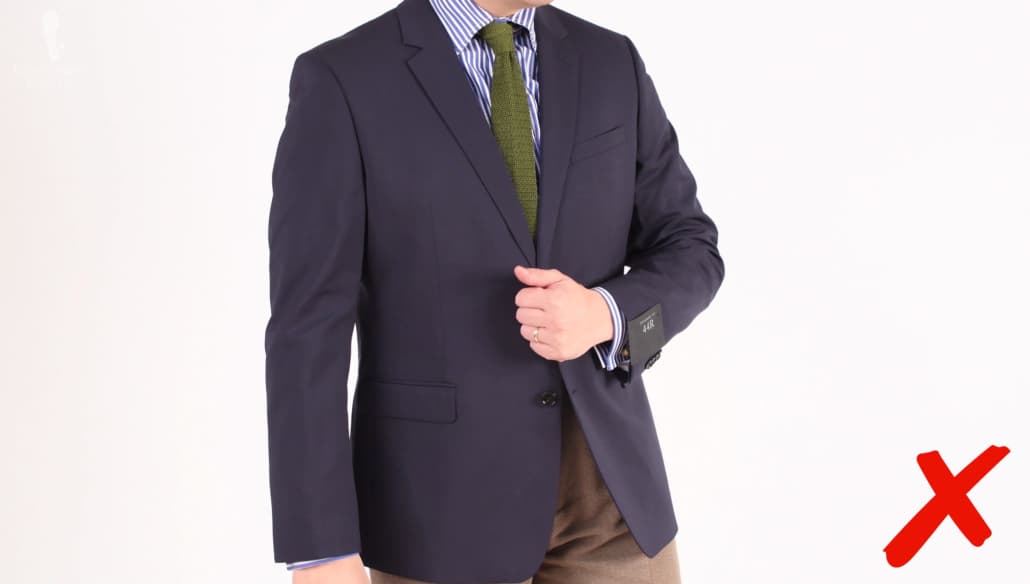
Narrow lapels, often accompanied by a similarly skinny tie, are ideally meant for tall and thin men. The narrowness will make the wearer’s chest seem broader because there’s more space between the lapel and the shoulder. This is why narrow lapels look fine on the boyish models who are often wearing them, but if you’ve got a naturally broader chest already, narrow lapels will probably look out of proportion. In general, then, narrower lapels are going to look better for a narrower chest and broader lapels for a broader chest.
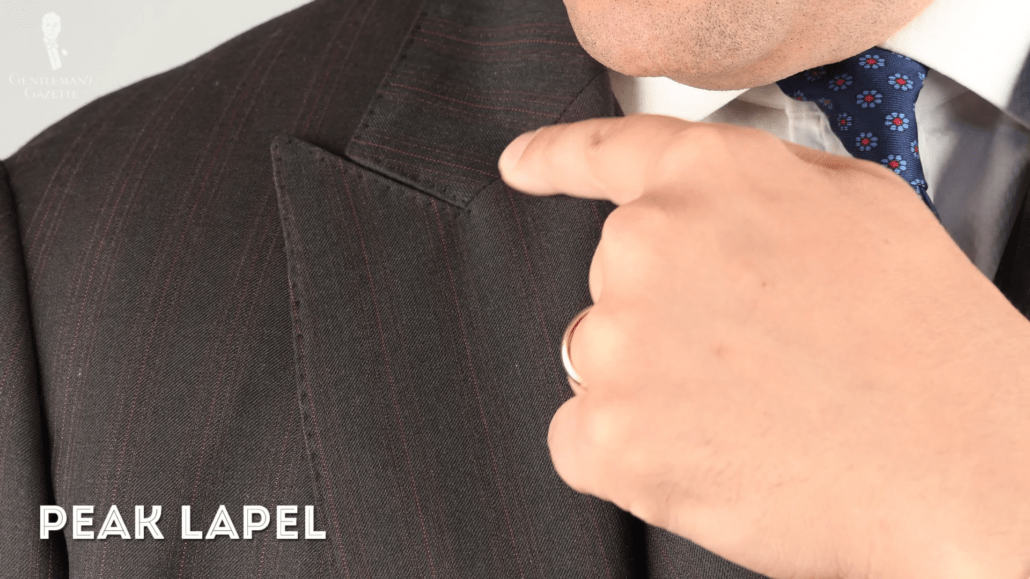
Modern jackets are also known for being shorter in length overall than more traditional styles. A traditional jacket is supposed to cover your seat (or rear end) when you’re standing. However, modern jackets are often going to be cut shorter, leaving more of the seat exposed. Overall, the bottom of a jacket is where your body is divided in two and thus, these modern jacket styles will often leave your torso looking shorter and your legs longer.
This, in and of itself, wouldn’t necessarily be a bad thing, as higher rise trousers are also designed to lengthen the leg line. However, because modern trousers typically have a lower rise, that paired with a shorter jacket style can often leave things looking a bit awkward overall around your midsection.
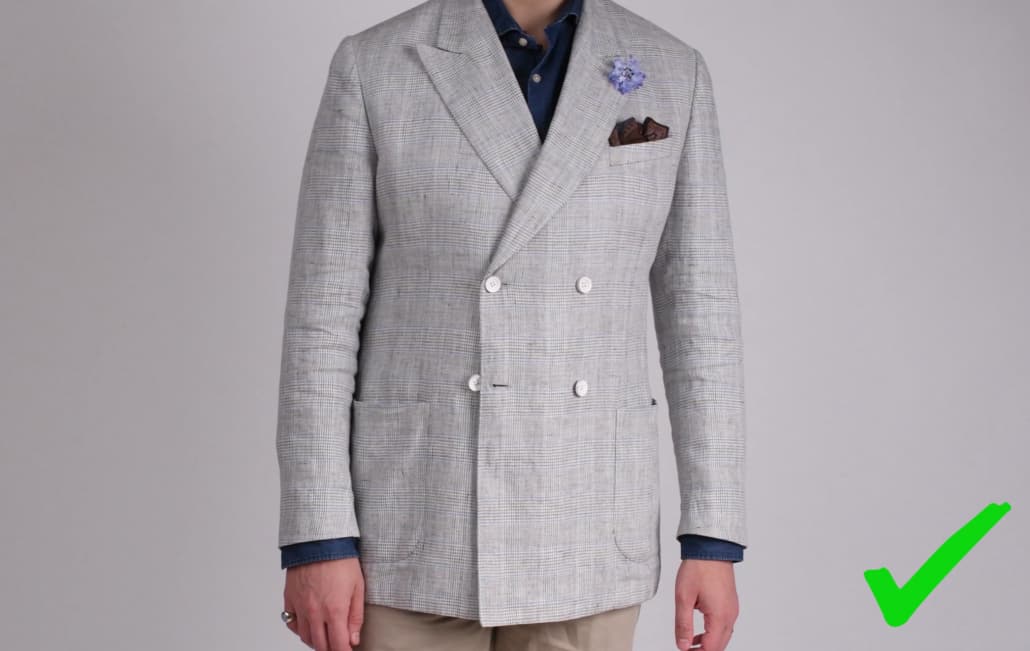
If you do have a body type that’s characterized by shorter legs and a longer torso, a slightly shorter jacket might work for you. But, still trying to follow the baseline of having the jacket cover your seat is going to look good on most men. Finally here, the buttoning point on a jacket is where the waist button is positioned. This is the top button that you’re supposed to button when standing. It might not always be the top button on the jacket itself, but it’s the one that is supposed to be buttoned.
These days, the buttoning point on many jackets has been migrating higher and higher on the chest making the upper torso look shorter and wider. This is why it’s often modeled by tall, thin men because it will help their shoulders to look a bit broader. This high buttoning point, in other words, is working to balance out the lean build of these models. However again, if you do already have a naturally broader chest or larger build having a jacket with a lower buttoning point closer to the natural waist will probably work better for you.

Is the skinny fit trend finally dead?
Conclusion
Be careful when you’re buying men’s wear in modern and/or trendy styles. Remember that the purpose of a garment is to flatter and accentuate your natural proportions and give you a more ideal visual silhouette overall. Therefore, if you’re really going to be able to pull off modern and trendy styles well, you’ll probably need the body type that suits these kinds of garments best. You’ll need to be tall, thin, and ideally youthful.
Even if you are in the small percentage of the general population for whom these styles would work, however, you might not want to wear them. Why is this? After all, they are still trends at the end of the day–and trends will eventually go out of style. What we would suggest, both for men who do fit this ideal modern body type and for the many men who don’t, is to lean on a more classic style; the one that we discuss here most often at the Gentleman’s Gazette.
If you can incorporate these timeless style hallmarks into your looks, you won’t be immediately dated by the kinds of garments you’re wearing and we’ll have a more timeless overall look. So, while modern styles may have their ideal target customers, a classic style is likely going to be more timeless and more comfortable for the vast majority of men. In these cases, then, your choice should be clear.
What’s your take on modern and trendy styles? Share with us in the comments below!
Outfit Rundown
I’m wearing an ensemble that is a bit more modern in style but definitely still has some classic influences. It’s not completely in either camp. My charcoal gray suit has just a bit of pattern and texture in its weave and it does have some more modern features like a slightly closer fit and narrower lapels. However, neither of these features are at extremes. Similarly, my knit tie which is from Fort Belvedere and in beige and red silk, is a bit on the narrower side to complement the lapels but again, not at an extreme.
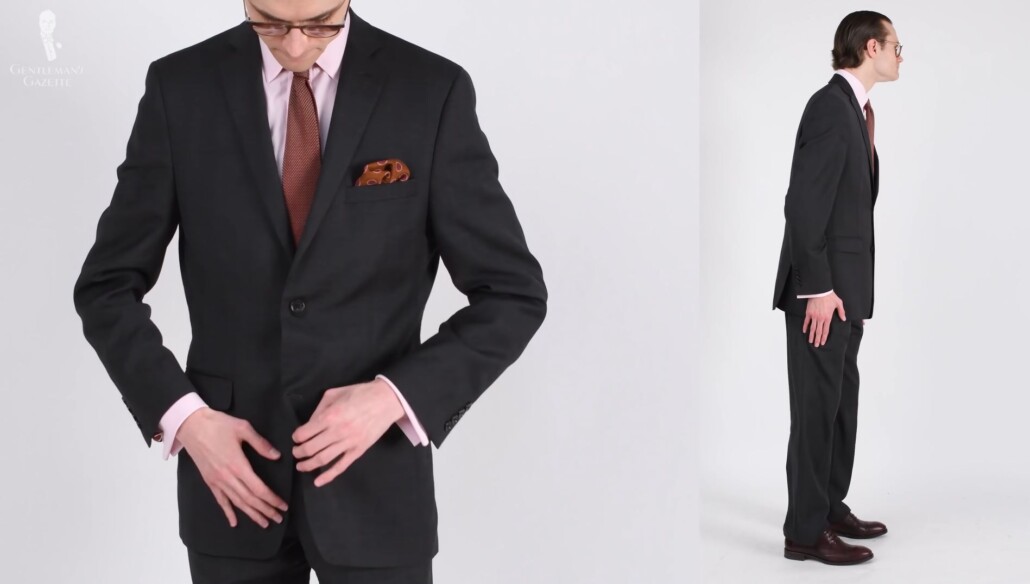
Also from Fort Belvedere today are my shadow striped socks in gray and burgundy and my belt which is part of our new Fort Belvedere belt system. The belt itself is in Bordeaux burgundy calf leather and the buckle is silver-plated brass in the model we’re calling the Jasper. Any belt and any buckle can be exchanged in this system leading to maximum versatility in your outfits. The belt complements my shoes which are similarly burgundy colored cap toe Oxford and my pocket square is a vintage model with some orange and pink tones that complement my pink shirt and the red accents in my outfit.
One final Fort Belvedere accessory today, are my cufflinks which are platinum plated sterling silver eagle claw models featuring red carnelian as the stone. You can find all of the Fort Belvedere accessories that I’m wearing today including the cufflinks, socks, tie, and belt and buckle in the Fort Belvedere shop.
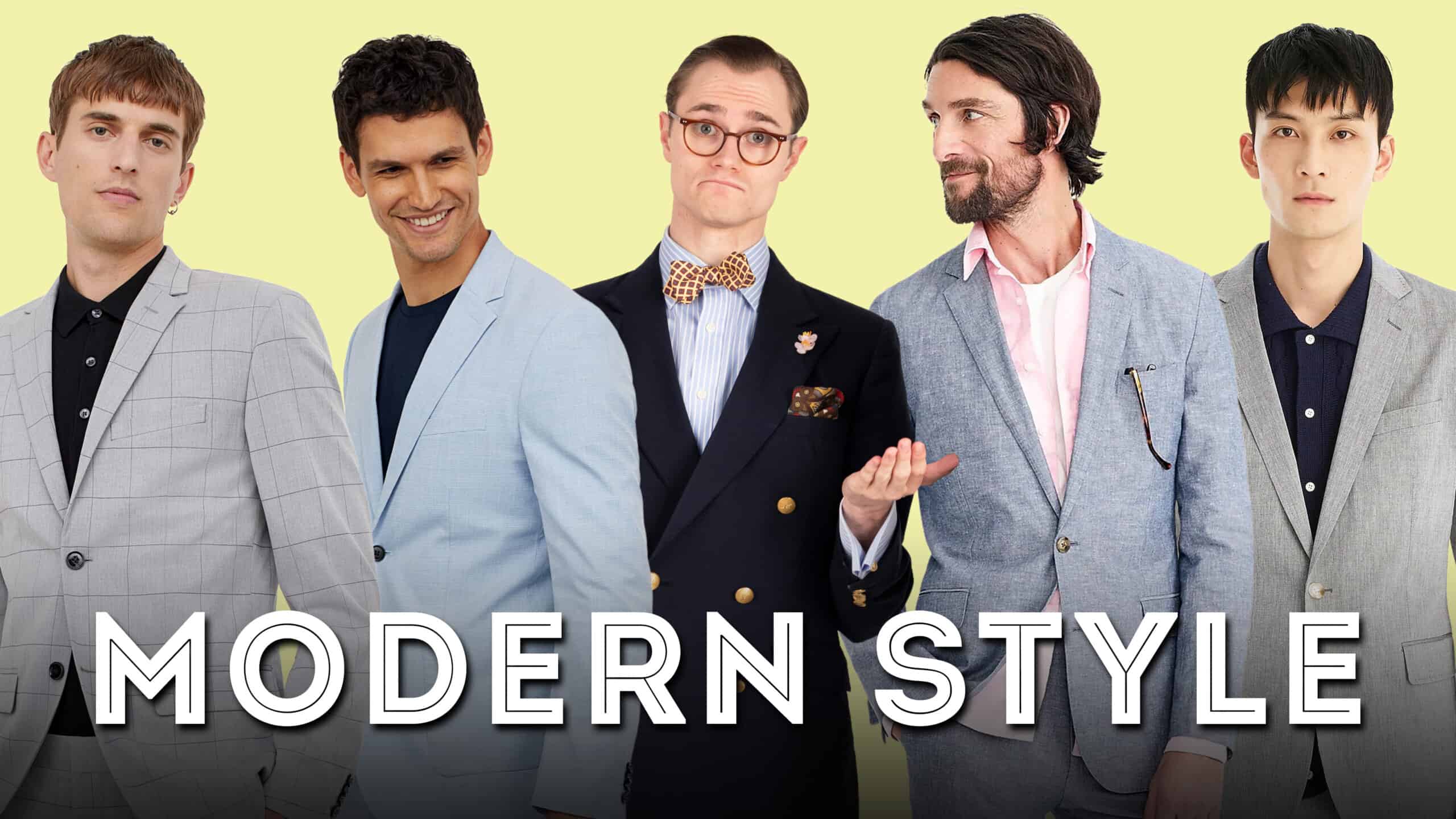


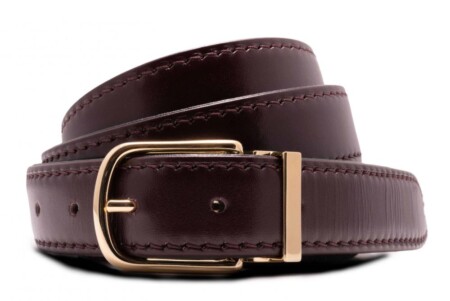
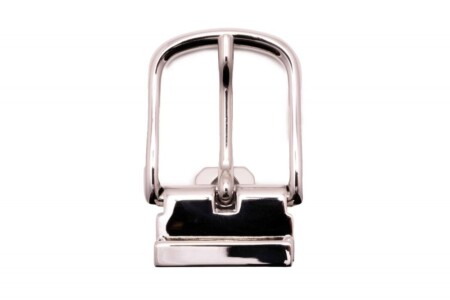
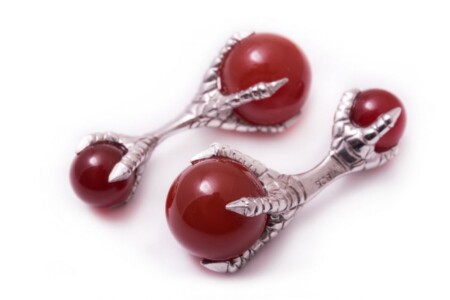
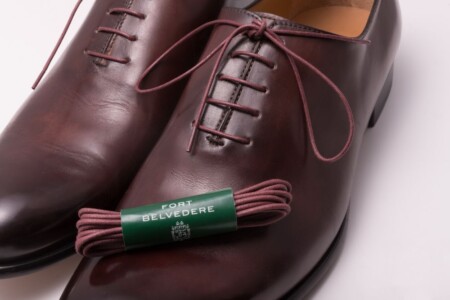
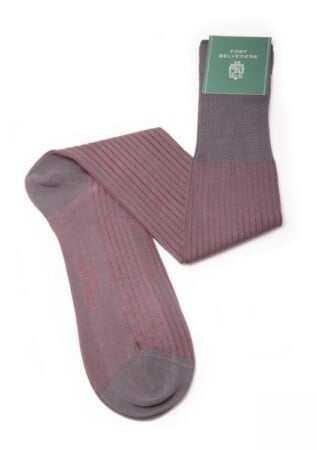
We seek him here, we seek him there,
Those gentlemen seek him everywhere.
Is he in heaven?—Is he in hell?
That demmed, elusive Raphael?
Glimpses of him do abound,
Especially if you look around
1:19, 1:30, 5:02…
Not enough Raphael for you?
Preston Preston looking slight
In a suit that’s somewhat tight
What sartorial hand or eye
Can frame his lanky symmetry?
P.S. If we want to do bad poetical parodies keep them coming, Gentleman’s Gazette.
As a professor of literature, I approve this comment.
I detest skinny-cut trousers with a passion. For year after year I have watched, with dismay and disgust, as they stink up the offerings. Every year I say, “This trend can’t continue,” and every fall proves me wrong. Trousers of otherwise beautiful design are ruined by narrow legs that look good on absolutely no one. Look at the offerings of Pini Parma for a good example. When is this blight on men’s fashion ever going to end?
Thanks for sharing your thoughts!
Thank you especially for anyone who doesn’t resemble Preston.
Gary O’Neal
One reason we are seeing the same body type in all menswear ads is that twentysomethings work cheap and a photo shoot involving multiple models can be more expensive than using the same model for all clothing.
Yes, we who do not fit that ideal need an advocate in the men’s fashion industry. But who wants to look at models that reflect reality. Fashion is passion, after all and we seek the ideal, even if it isn’t real!
Thanks for sharing!
Clothes will almost always look better on models. That’s why it’s important to know your proportions and only wear clothes that fit you properly. Modern styles also use less fabric which reduces manufacturing costs. Clothing manufacturers wouldn’t push styles just because they’ll make more money from them, would they? ;)
David, good point about the economic reason behind it. Reminds me of what developers do in creating subdivisions of housing too–how many can be packed into the blueprint rather than allowing open spaces.
The formula for today’s suiting:
Too tight x too short = bore.
The 1930s had it correct, the 2020s are just dreck.
Thanks for sharing!
Best suit fitting and design I ever experienced was in a small shop in Singapore. Proprietor and tailor were both comparatively tiny Malays and only the proprietor spoke any English. I’m 6’5″ and the tailor had to literally stand on a stool and climb all over me with his tape. Choosing fabric was a laborious sign language process, and I didn’t have much energy left when it came time to decide buttons, lapels, darts, and pleats. I was wearing sandals and a wringing-wet market shirt while I stood there for the fitting. 36 hours later, the suit was at the hotel waiting for me and it was perfect! Maybe lucky, but I suspect it was the separation of cultures and the variety of customers they saw that helped them look at me objectively and pick what was best for my build, while I didn’t have the language to argue for any personal misconceptions or vanities. That was fifteen years ago, and I can still wear the suit comfortably today.
I think ultimately this slim/skinny fit is a combination of business practice and cultural pressure.
The first is that slim/skinny fit means less materials which, for a company producing many hundreds if not thousands of suits, significantly impacts operational expenses. The second is this almost deification of skinniness – a message that is linked to aspirationalism and snobbery – to be skinny and wear a suit that fits to you is a sign of wealth, of being able to afford a personal trainer and health foods.
As a man who is not tall nor thin, I almost exclusively buy vintage and have the suits tailored to fit. The only things I don’t buy vintage is shoes at present!
Thanks for sharing!
I feel like somebody finally understands me. In the past years I have not found any modern clothing, that looks good on me and is comfortable. So I tend to buy retro and vintage clothing.
Having a 33 to 34inch waist but pretty big things makes it nearly impossibly to find a jeans in a regular store.
Thanks for sharing!
Age is something to be considered in the wearing and fitting of the suit. Independently of the formality, the type of cut, materials, and in general a corporeal appearance of the older gentleman, which it is independent of their level of physic. They required a looser approach; legs are not as strong and straight has they use to be, shoulders have the tendency to droop a bit, your neck slash substantially; and not you are not decrepit yet, but these implicit characteristics cannot be ignored if you want to keep the “bella figura” going on. There is nothing more ridiculous than an older gentleman trying to enhance their youthful appearance, by competing with their boyish contemporaries.
I agree with this post. I like modern suits, sure. But my narrow shoulders, wide hips/thighs, and large shoe size, and my Asian-typical height – just 163 cm (5’4″) – just makes it hard for me to find good suits. Wearing suits just make me look weird, especially with my mobility aids – people just make fun of me. Companies never think of disabled bodies like mine, so these ill-fitting clothes make me feel awkward instead of confident. The dashing swagger of, say, my idol Frank Sinatra – seems like a pipe dream. I wish they cared more about people with non-ideal looks like me.
Note that I’m also in my 20s, probably only a bit older than these models. But my body’s no longer straight or strong, it’s just disheartening.
Maybe disabled bodies are not the concern of your site, Mr. Raphael and the Gentleman’s Gazette, but if you’d write a piece about disabled fashion – such as flattering cuts to our maybe crooked, fat, weak, etc. bodies – and also accessible fashion that are easy to wear for e.g. arthritic fingers, good for sensitive skin, etc., that would be much appreciated. Thank you!